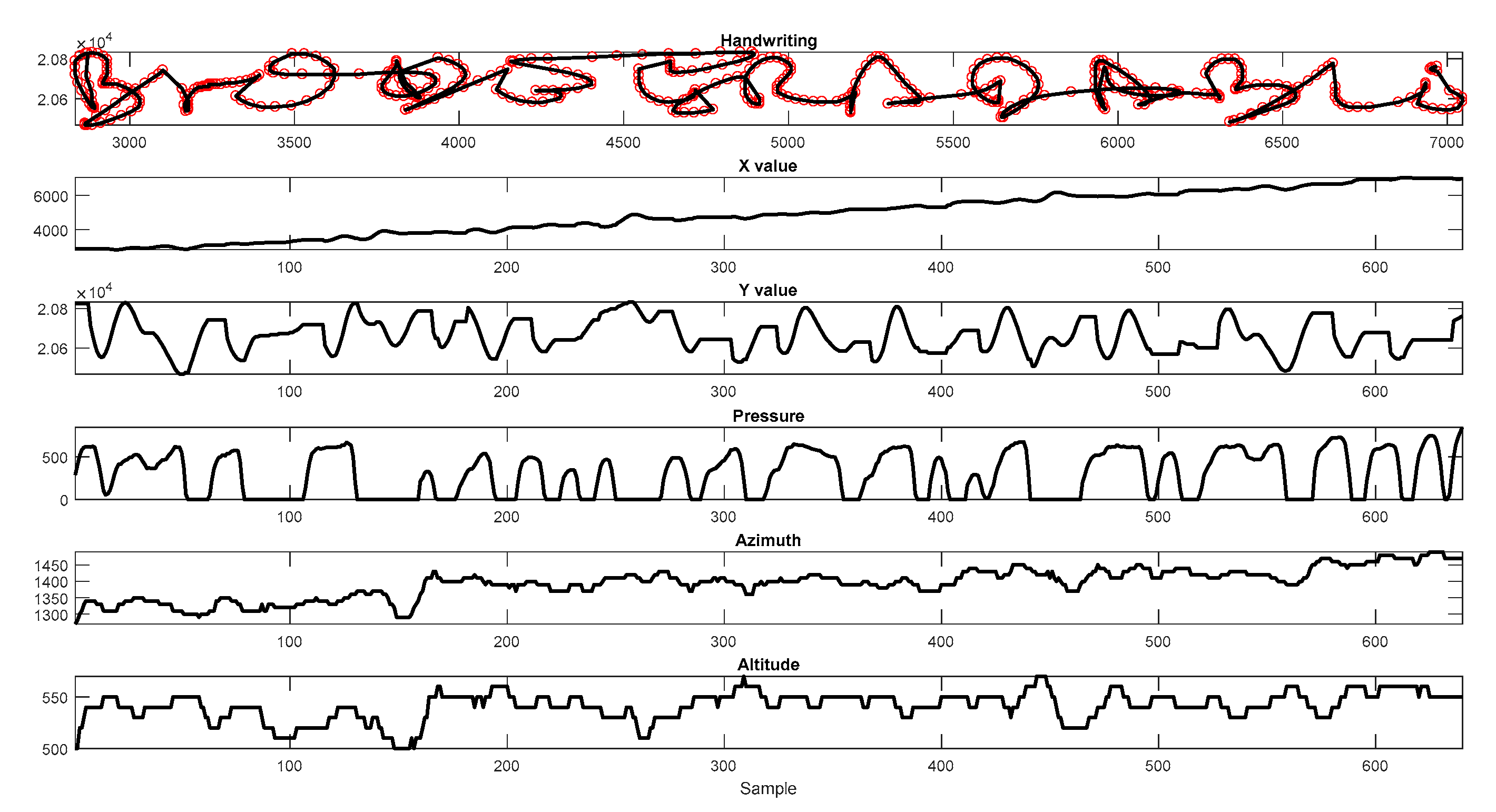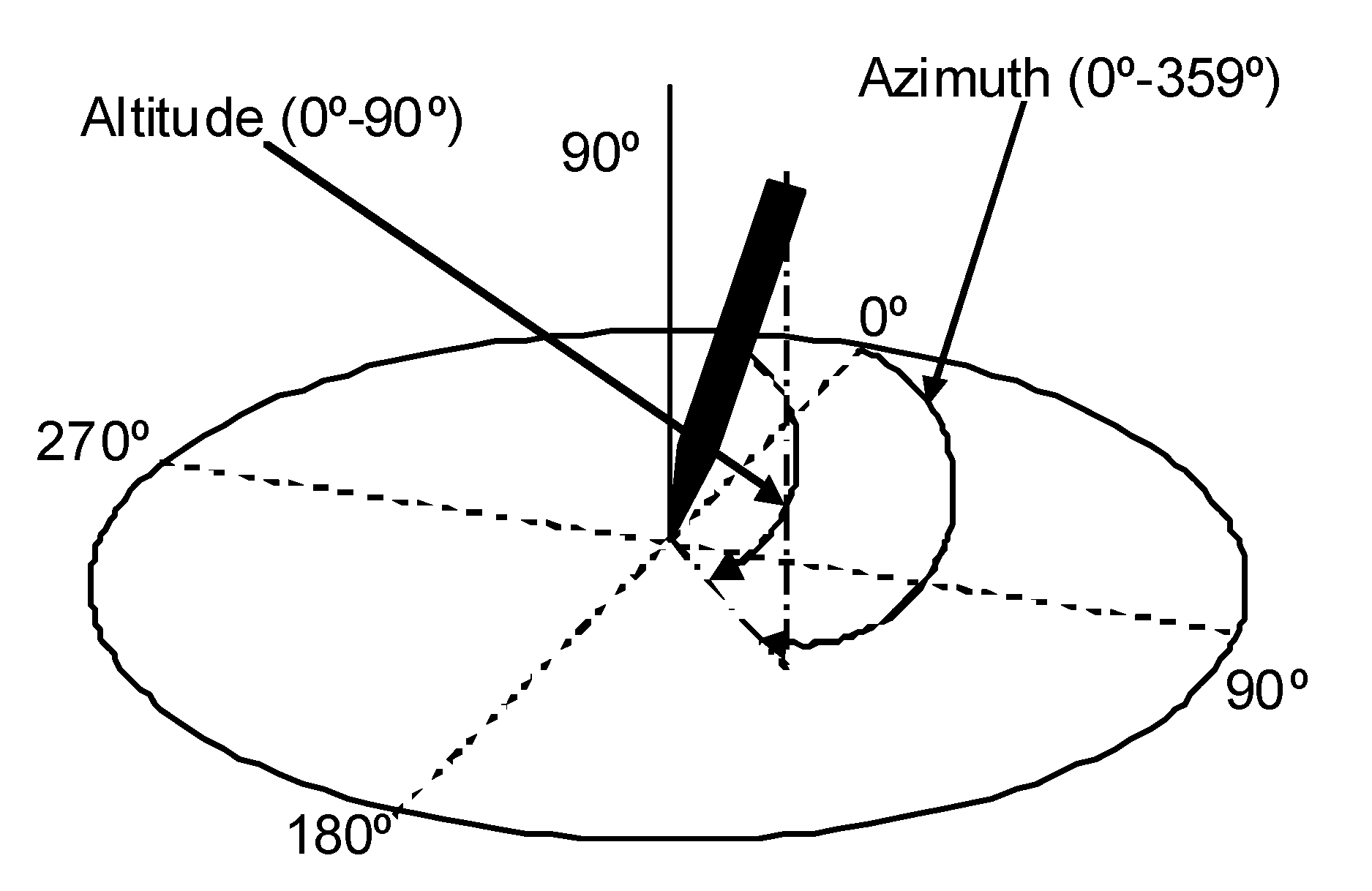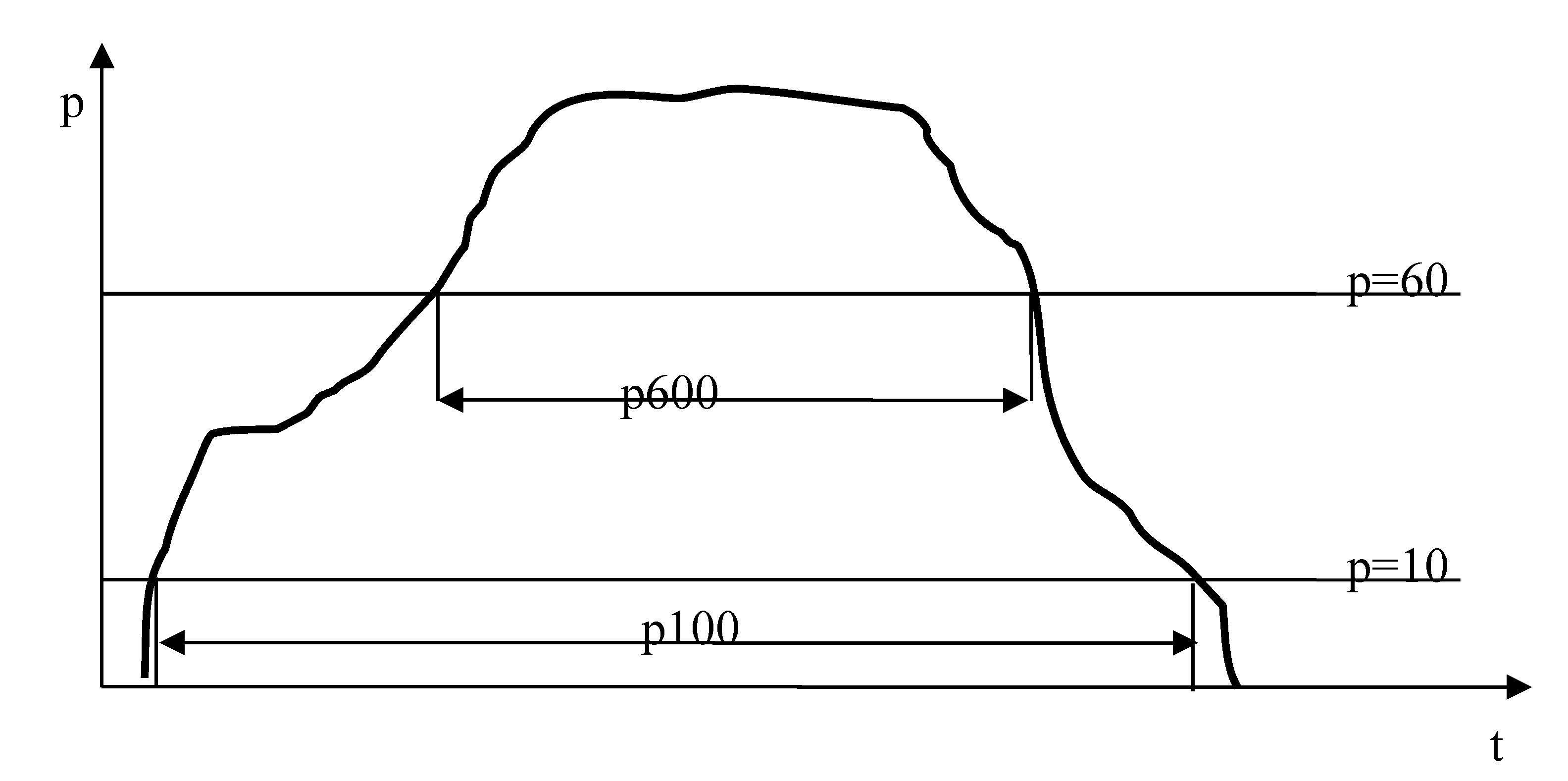On the Handwriting Tasks’ Analysis to Detect Fatigue
Abstract
:Featured Application
Abstract
1. Introduction
1.1. Handwriting Analysis in Fatigue Condition by Calligraphic Experts
1.2. Automatic Fatigue Detection by Computer Analysis
Online Handwritten Signal Acquisition
2. Database
2.1. Database Participants
- Age: 21.3 ± 3.5 years
- Weight: 71.9 ± 7.5 kg
- Height: 175.6 ± 7.2 cm
- Body mass index: 23.2 ± 3.4
2.2. Handwriting Analysis
2.3. Metabolic Assessment
2.4. Mechanical Assessment
2.5. Testing Procedures
- Temperature 20–22.5 °C
- Atmospheric pressure: 745–760 mm Hg
- Relative humidity 40–50%
2.5.1. Phase 1: Jump Test
2.5.2. Phase 2: Wingate Test
2.5.3. Phase 3: Fatigue Test
3. Experimental Results
3.1. Handwriting Feature Extraction
- dx = diff(x); %first derivative of x coordinate
- ddx = diff(x,2); %second derivative of x coordinate
- up = find(p == 0);
- t_up = length (up) %addition of samples with pressure equal to zero
- %zero crossing rate for pressure signal
- v = diff(p > 0);
- strokes_d = (p(1) > 0) + sum(v == 1); %strokes down
- strokes_u = (p(1) == 0) + sum(v == −1); %strokes up
- nt_up = t_up/strokes_u; %normalized time up.
- down = find(ne(p,0));
- t_down = length(down) %addition of samples with pressure higher than zero.
- pN = sum(p > N).
- dx = diff(x); %first derivative of x coordinate
- dy = diff(y); %first derivative of y coordinate
- speed = sqrt(dx.^2 + dy.^2); %instantaneous speed
- max_speed = max(speed)
3.2. Handwriting Experimental Results
3.3. Metabolic Results
3.4. Mechanical Results
Rating of Perceived Exertion (RPE)
4. Discussion
- Fast fatigue recovery in pure mechanical handwriting tasks, considered as those that do not require too much cognitive effort. This can be observed in Table 2 with the reduction of significant features in Ph3 and the decrease of significance (increase of p values) when compared to Ph1/Pre (S1).
- Slow fatigue recovery in fine motor and cognitive handwritten tasks, considered as those that require high cognitive effort. This can be observed in Table 2 with the increase of significant features in Ph3 and increase of significance (decrease of p values) when compared to Ph1/Pre (S1). In addition, there were no differences between Ph2/post (S4) and Ph3/post (S5), which means no recovery after 3 min rest. It is worth mentioning that in this last phase no differences were found in lactate concentration and mechanical assessment when compared to initial values taken before exercise.
- There were no differences when performing handwriting (signature and cursive letters) or almost no differences (capital letters’ task). It is worth mentioning that capital letters’ task involves non-usual words, which require some cognitive effort to identify/memorize the word. Probably for this reason, the unique difference was in performance speed.
- There were differences between S3 and S5 in cognitive tasks, especially in task number 2 (house copying test). This implied that cognitive recovering was slower than the mechanical and metabolic one.
- There were almost no differences between S4 and S5. This means that despite the slight recovering of muscular and metabolic fatigue after three minutes of resting, there was no cognitive recovering, which would require more additional time.
5. Conclusions
Author Contributions
Funding
Conflicts of Interest
Ethical Standards
References
- Drotar, P.; Mekyska, J.; Rektorova, I.; Masarova, L.; Smekal, Z.; Faundez-Zanuy, M. Evaluation of handwriting pressure for differential diagnosis of Parkinson’s disease. Artif. Intell. Med. 2016, 67, 39–46. [Google Scholar] [CrossRef] [PubMed]
- Garre-Olmo, J.; Faundez-Zanuy, M.; López-de-Ipiña, K. kinematic and pressure features of handwriting and drawing: Preliminary results between patients with mild cognitive impairment, Alzheimer disease and healthy controls. Curr. Alzheimer Dis. 2017, 14, 960–968. [Google Scholar] [CrossRef] [PubMed]
- Ren, J.; Hussain, A.; Han, J.; Jia, X. Cognitive modelling and learning for multimedia mining and understanding. Cogn. Comput. 2019, 11, 761–762. [Google Scholar] [CrossRef] [Green Version]
- Yang, X.; Huang, K.; Zhang, R.; Goulermas, J.Y. A novel deep density model for unsupervised learning. Cogn. Comput. 2018, 11, 778–788. [Google Scholar] [CrossRef]
- Zhang, A.; Liu, S.; Sun, G.; Huang, H.; Ma, P.; Rong, J.; Ma, H.; Lin, C.; Wang, Z. Clustering of remote sensing imagery using a social recognition-based multi-objective gravitational search algorithm. Cogn. Comput. 2018, 11, 789–798. [Google Scholar] [CrossRef]
- Ma, X.; Liu, W.; Tao, D.; Zhou, Y. Ensemble p-laplacian regularization for scene image recognition. Cogn. Comput. 2019, 11, 841–854. [Google Scholar] [CrossRef]
- Fiz, J.A.; Faundez-Zanuy, M.; Monte-Moreno, E.; Roure-Alcobé, J.; Andreo, F.; Gómez, R.; Manzano, J.R. Short term oxygen therapy effects in hypoxemic patients measured by drawing analysis. Elsevier Comput. Methods Programs Biomed. 2015, 118, 330–336. [Google Scholar] [CrossRef] [Green Version]
- Faundez-Zanuy, M.; Hussain, A.; Mekyska, J.; Sesa-Nogueras, E.; Monte-Moreno, E.; Esposito, A.; Chetouani, M.; Garre-Olmo, J.; Abel, A.; Smekal, Z.; et al. Biometric applications related to human beings: There is life beyond security. Cogn. Comput. 2013, 5, 136–151. [Google Scholar] [CrossRef]
- Faundez-Zanuy, M.; Fierrez, J.; Ferrer, M.A.; Plamondon, R. Handwriting biometrics: Applications and future trends in e-security and e-health. Cogn. Comput. 2020, 12, 940–953. [Google Scholar] [CrossRef]
- Impedovo, D.; Pirlo, G.; Vessio, G.; Angelillo, M.T. A handwriting-based protocol for assessing neurodegenerative dementia. Cogn. Comput. 2019, 11, 576–586. [Google Scholar] [CrossRef]
- Seo, S.-P.; Lee, M.-H.; Williamson, J.; Lee, S.-W. Changes in fatigue and EEG amplitude during a longtime use of brain-computer interface. In Proceedings of the 2019 7th International Winter Conference on Brain-Computer Interface (BCI), Gangwon, Korea, 18–20 February 2019. [Google Scholar] [CrossRef]
- Myrden, A.; Chau, T. Effects of user mental state on EEG-BCI performance. Front. Hum. Neurosci. 2015, 9, 308. [Google Scholar] [CrossRef] [Green Version]
- Roy, R.; Charbonnier, S.; Bonnet, S. Detection of mental fatigue using an active BCI inspired signal processing chain. IFAC Proc. Vol. 2014, 47, 2963–2968. [Google Scholar] [CrossRef] [Green Version]
- Heidi, H.; Harralson, L.S. Miller, Huber and Headrick’s Handwriting Identification: Facts and Fundamentals, 2nd ed.; CRC Press: Boca Raton, FL, USA, 2017; ISBN 9781498751308. [Google Scholar]
- Hagan, W.E. Disputed Handwriting; Banks & Brothers: Albany, NY, USA, 1894. [Google Scholar]
- Harrison, W.R. Suspect Documents; Frederick A Praeger: New York, NY, USA, 1958; p. 297. [Google Scholar]
- Nousianen, H. Some observations on the factors causing changes in writing style. Nord. Krim. Tidsskr. 1951, 21, 8. [Google Scholar]
- Roulston, M.G. The Fatigue Factor: An Essay Dealing with the Effects of Physical Fatigue on Handwriting Habits; (An Unpublished Report of a Study Conducted by the RCMP Crime Detection Laboratories, 1959); RCMP Crime Detection Laboratories: Vancouver, BC, Canada, 1959. [Google Scholar]
- Remillard, J.L.G. Abnormal cardiac rhythm and handwriting (Ottawa: An unpublished study conducted at the RCMP Crime Detection Laboratories, May 1970). Can. Soc. Forensic Sci. J. 1971, 4, 145–153. [Google Scholar] [CrossRef]
- Faruk, A.; Turan, N. Handwritten changes under the effect of alcohol. Forensic Sci. Int. 2003, 132, 201–210. [Google Scholar]
- Phillips, J.C.; Ogeil, R.P.; Müller, F. Alcohol consumption and handwriting: A kinematic analysis. Hum. Mov. Sci. 2009, 28, 619–632. [Google Scholar] [CrossRef] [PubMed]
- Tucha, O.; Mecklinger, L.; Walitza, S.; Lange, K.W. The effect of caffeine on handwriting movements in skilled writers. Hum. Mov. Sci. 2006, 25, 523–535. [Google Scholar] [CrossRef]
- Foley, R.G.; Miller, A.L. The effects of marijuana and alcohol usage on handwriting. Forensic Sci. Int. 1979, 14, 159–164. [Google Scholar] [CrossRef]
- Faundez-Zanuy, M. Signature recognition state-of-the-art. IEEE Aerosp. Electron. Syst. Mag. 2005, 20, 28–32. [Google Scholar] [CrossRef]
- Faundez-Zanuy, M. Biometric security technology. IEEE Aerosp. Electron. Syst. Mag 2006, 21, 15–26. [Google Scholar] [CrossRef]
- Folstein, M.F.; Folstein, S.E.; McHugh, P.R. Mini mental state: A practical method for grading the cognitive state of patients for the clinician. J. Psychiatr. Res. 1975, 12, 189–198. [Google Scholar] [CrossRef]
- Lopez-de-Ipiña, K.; Bergareche, A.; de La Riva, P.; Faundez-Zanuy, M.; Calvo, P.M.; Roure, J.; Sesa-Nogueras, E. Automatic non-linear analysis of non-invasive writing signals, applied to essential tremor. J. Appl. Log. 2016, 16, 50–59. [Google Scholar] [CrossRef]
- López-de-Ipiña, K.; Solé-Casals, J.; Faundez-Zanuy, M.; Calvo, P.M.; Sesa, E.; de Lizarduy, U.M.; De La Riva, P.; Martí-Massó, J.F.; Beitia, B.; Bergareche, A. Selection of entropy based features for automatic analysis of essential tremor. Entropy 2016, 18, 184. [Google Scholar] [CrossRef] [Green Version]
- Garnacho-Castaño, M.V.; Domínguez Herrera, R.; Ruiz-Solano, P.; Maté-Muñoz, J.L. Acute physiological and mechanical responses during resistance exercise executed at the lactate threshold workload. J. Strength Cond. Res. 2015, 29, 2867–2873. [Google Scholar] [CrossRef] [PubMed]
- Garnacho-Castaño, M.V.; Albesa-Albiol, L.; Serra-Payá, N.; Bataller, M.G.; Cobo, E.P.; Cano, L.G.; Guodemar-Pérez, J.; Carbonell, T.; Domínguez, R.; Maté-Muñoz, J.L. Oxygen uptake slow component and the efficiency of resistance exercises. J. Strength Cond. Res. 2018, 1–9. [Google Scholar] [CrossRef] [PubMed]
- Borg, G. Perceived exertion as an indicator of somatic stress. Scand. J. Rehabil. Med. 1970, 2, 92–98. [Google Scholar] [PubMed]
- Bar-Or, O. The Wingate anaerobic test: An update on methodology, reliability and validity. Sport. Med. 1987, 4, 381–394. [Google Scholar] [CrossRef]
- Vandewalle, D.; Gilbert, P.; Monod, H. Standard anaerobic tests. Sport. Med. 1987, 4, 268–289. [Google Scholar] [CrossRef]
- Shannon, C.E. A mathematical theory of communication. Bell Syst. Tech. J. 1948, 27, 379–423. [Google Scholar] [CrossRef] [Green Version]
- Alonso-Martinez, C.; Faundez-Zanuy, M.; Mekyska, J. A comparative study of in-air trajectories at short and long distances in online handwriting. Cogn. Comput. 2017, 9, 712–720. [Google Scholar] [CrossRef] [Green Version]
- Pang, J.; Zhao, Y.; Xu, J.; Gu, Y.; Yu, G. Super-Graph classification based on composite subgraph features and extreme learning machine. Cogn. Comput. 2018, 10, 922–936. [Google Scholar] [CrossRef]
- Liu, H.; Fang, J.; Xu, X.; Sun, F. Surface material recognition using active multi-modal extreme learning machine. Cogn. Comput. 2018, 10, 937–950. [Google Scholar] [CrossRef]
- Perera, A.G.; Law, Y.W.; Chahl, J. Human pose and path estimation from aerial video using dynamic classifier selection. Cogn. Comput. 2018, 10, 1019–1041. [Google Scholar] [CrossRef] [Green Version]
- Liu, B.; He, L.; Li, Y.; Zhe, S.; Xu, Z. Neuralcp: Bayesian multiway data analysis with neural tensor decomposition. Cogn. Comput. 2018, 10, 1051–1061. [Google Scholar] [CrossRef]
- Wang, H.; Feng, R.; Leung, A.C.S.; Tsang, K.F. Lagrange programming neural network approaches for robust time-of-arrival localization. Cogn. Comput. 2017, 10, 23–34. [Google Scholar] [CrossRef]
- Wang, L.; Uchida, S.; Zhu, A.; Sun, J. Human reading knowledge inspired text line extraction. Cogn. Comput. 2017, 10, 84–93. [Google Scholar] [CrossRef]
- Jiang, F.; Kong, B.; Li, J.; Dashtipour, K.; Gogate, M. Robust visual saliency optimization based on bidirectional Markov chains. Cogn. Comput. 2020, 1–12. [Google Scholar] [CrossRef]







| Set | Acquisition Time | Content |
|---|---|---|
| S1 | Ph1-Pre-FA | Handwriting Metabolic Mechanical |
| S2 | Ph1-Post-FA | Handwriting Metabolic Mechanical |
| S3 | Ph2-Pre-FA | Handwriting Metabolic Mechanical |
| S4 | Ph2-Post-FA | Handwriting Metabolic Mechanical |
| S5 | Ph3-Post-FA | Handwriting Metabolic Mechanical |
| Wilcoxon Test p Value When Comparing a Couple of Sets | ||||||||||||
|---|---|---|---|---|---|---|---|---|---|---|---|---|
| Task Type | Figure | Feature | S1–S2 | S1–S3 | S1–S4 | S1–S5 | S2–S3 | S2–S4 | S2–S5 | S3–S4 | S3–S5 | S4–S5 |
| Cognitive | 1 | Standard deviation of speed | 0.863 | 0.421 | 0.654 | 0.328 | 0.0412 | 0.1074 | 0.0098 | 0.7717 | 0.4605 | 0.1994 |
| Standard deviation of acceleration | 0.84 | 0.421 | 0.579 | 0.328 | 0.0332 | 0.0750 | 0.0098 | 0.7074 | 0.3829 | 0.1994 | ||
| p[100–600] | 0.5 | 0.199 | 0.051 | 0.107 | 0.0985 | 0.0236 | 0.0750 | 0.1858 | 0.3829 | 0.6359 | ||
| Second derivative of pressure | 0.186 | 0.244 | 0.098 | 0.014 | 0.6543 | 0.3641 | 0.0750 | 0.2926 | 0.0370 | 0.0620 | ||
| Max speed | 0.579 | 0.293 | 0.383 | 0.228 | 0.0620 | 0.1168 | 0.0186 | 0.6543 | 0.3829 | 0.2594 | ||
| Max acceleration | 0.598 | 0.31 | 0.346 | 0.244 | 0.0620 | 0.0985 | 0.0164 | 0.6171 | 0.4020 | 0.2594 | ||
| Normalized time up | 0.117 | 0.046 | 0.011 | 0.033 | 0.1858 | 0.1074 | 0.1994 | 0.4213 | 0.6724 | 0.7564 | ||
| Time in air | 0.364 | 0.117 | 0.0458 | 0.075 | 0.3641 | 0.1994 | 0.2283 | 0.2136 | 0.2926 | 0.6543 | ||
| Time down | 0.31 | 0.364 | 0.276 | 0.046 | 0.6171 | 0.3457 | 0.0507 | 0.4408 | 0.0683 | 0.0561 | ||
| 2 | Second derivative of pressure | 0.364 | 0.52 | 0.051 | 0.117 | 0.3829 | 0.0209 | 0.0561 | 0.0098 | 0.0186 | 0.6543 | |
| p > 100 | 0.383 | 0.402 | 0.186 | 0.041 | 0.4802 | 0.1487 | 0.0412 | 0.2136 | 0.0507 | 0.1858 | ||
| p[100–600] | 0.48 | 0.149 | 0.082 | 0.026 | 0.2757 | 0.1074 | 0.0823 | 0.1994 | 0.1487 | 0.5000 | ||
| Time in air | 0.16 | 0.149 | 0.024 | 0.009 | 0.6902 | 0.0620 | 0.0236 | 0.0901 | 0.0412 | 0.2594 | ||
| Time down | 0.293 | 0.383 | 0.186 | 0.019 | 0.5198 | 0.1375 | 0.0209 | 0.1605 | 0.0412 | 0.1994 | ||
| Normalized time up | 0.117 | 0.107 | 0.013 | 9 × 10−4 | 0.4408 | 0.0823 | 0.0209 | 0.1605 | 0.0236 | 0.2926 | ||
| Mechanical | 6 | Entropy of Y | 0.5 | 0.024 | 0.52 | 0.075 | 0.0370 | 0.6171 | 0.2136 | 0.9814 | 0.8271 | 0.0901 |
| Time in air | 0.0412 | 0.011 | 0.002 | 0.002 | 0.0750 | 0.0750 | 0.0458 | 0.4605 | 0.4213 | 0.4213 | ||
| Normalized time up | 0.149 | 0.013 | 0.01 | 0.008 | 0.1268 | 0.0823 | 0.0561 | 0.5000 | 0.4408 | 0.5198 | ||
| 8 | Max speed | 0.068 | 0.026 | 0.03 | 0.117 | 0.2283 | 0.5000 | 0.5980 | 0.7406 | 0.7864 | 0.5592 | |
| Standard deviation of speed | 0.098 | 0.03 | 0.037 | 0.046 | 0.2136 | 0.5980 | 0.5980 | 0.8271 | 0.7717 | 0.5395 | ||
| Fine motor | 3 | Entropy of X | 0.741 | 0.46 | 0.068 | 0.672 | 0.2136 | 0.0332 | 0.2136 | 0.2926 | 0.6724 | 0.9668 |
| p[100–400] | 0.293 | 0.48 | 0.056 | 0.005 | 0.5395 | 0.1074 | 0.0186 | 0.0750 | 0.0507 | 0.3829 | ||
| Second derivative of pressure | 0.0023 | 0.107 | 0.03 | 0.004 | 0.9380 | 0.6359 | 0.4408 | 0.1487 | 0.0750 | 0.2436 | ||
| Time down | 0.1729 | 0.16 | 0.062 | 0.019 | 0.3829 | 0.2436 | 0.0750 | 0.3098 | 0.1074 | 0.2436 | ||
| 5 | Max acceleration | 0.974 | 0.383 | 0.801 | 0.772 | 0.0412 | 0.2757 | 0.1168 | 0.9317 | 0.7564 | 0.2757 | |
| p > 600 | 0.364 | 0.579 | 0.068 | 0.173 | 0.7406 | 0.0507 | 0.1375 | 0.0370 | 0.0901 | 0.6171 | ||
| 9 | Standard deviation of acceleration | 0.707 | 0.098 | 0.46 | 0.346 | 0.0458 | 0.4605 | 0.1375 | 0.9099 | 0.7074 | 0.2594 | |
| Second derivative of pressure | 0.636 | 0.137 | 0.011 | 0.046 | 0.0901 | 0.0332 | 0.0370 | 0.3098 | 0.4408 | 0.5000 | ||
| Time in air | 0.186 | 0.186 | 0.0370 | 0.008 | 0.559 | 0.214 | 0.1074 | 0.127 | 0.068 | 0.46 | ||
| Ph.1. Pre-FA | Ph.1. Post-FA | Ph.2. Pre-FA | Ph.2. Post-FA | Ph.3-FA | P1 (ES-SP) | P2 (ES-SP) | P3 (ES-SP) | |
|---|---|---|---|---|---|---|---|---|
| Lactate (mmol L−1) | 1.11 (0.17) | 1.01 (0.17) * | 0.99 (0.20) | 14.19 (2.10) *,#,ƒ | 10.49 (2.94) § | <0.001 | <0.001 | <0.001 |
| (0.97–1.00) | (0.92–1.00) | (0.96–1.00) | ||||||
| Flight height (cm) | 36.12 (5.50) | 35.21 (5.47) | 34.86 (5.71) | 33.25 (4.44) *,†,ƒ | 34.09 (4.32) | 0.032 | 0.011 | <0.001 |
| (0.17–0.65) | (0.31–0.77) | (0.46–0.99) | ||||||
| Power output (W kg−1) | 29.83 (3.99) | 28.84 (4.29) | 28.59 (4.28) | 27.33 (3.76) *,#,ƒ | 28.37 (3.81) ‡ | 0.003 | 0.060 | <0.001 |
| (0.31–0.91) | (0.20–0.48) | (0.42–0.99) | ||||||
| RPE | 1.13 (1.05) | 1.82 (1.34) * | 1.92 (1.17) † | 8.32 (0.95) *,#,ƒ | 5.26 (1.56) § | <0.001 | <0.001 | <0.001 |
| (0.93–1.00) | (0.92–1.00) | (0.97–1.00) |
Publisher’s Note: MDPI stays neutral with regard to jurisdictional claims in published maps and institutional affiliations. |
© 2020 by the authors. Licensee MDPI, Basel, Switzerland. This article is an open access article distributed under the terms and conditions of the Creative Commons Attribution (CC BY) license (http://creativecommons.org/licenses/by/4.0/).
Share and Cite
Garnacho-Castaño, M.-V.; Faundez-Zanuy, M.; Lopez-Xarbau, J. On the Handwriting Tasks’ Analysis to Detect Fatigue. Appl. Sci. 2020, 10, 7630. https://0-doi-org.brum.beds.ac.uk/10.3390/app10217630
Garnacho-Castaño M-V, Faundez-Zanuy M, Lopez-Xarbau J. On the Handwriting Tasks’ Analysis to Detect Fatigue. Applied Sciences. 2020; 10(21):7630. https://0-doi-org.brum.beds.ac.uk/10.3390/app10217630
Chicago/Turabian StyleGarnacho-Castaño, Manuel-Vicente, Marcos Faundez-Zanuy, and Josep Lopez-Xarbau. 2020. "On the Handwriting Tasks’ Analysis to Detect Fatigue" Applied Sciences 10, no. 21: 7630. https://0-doi-org.brum.beds.ac.uk/10.3390/app10217630






